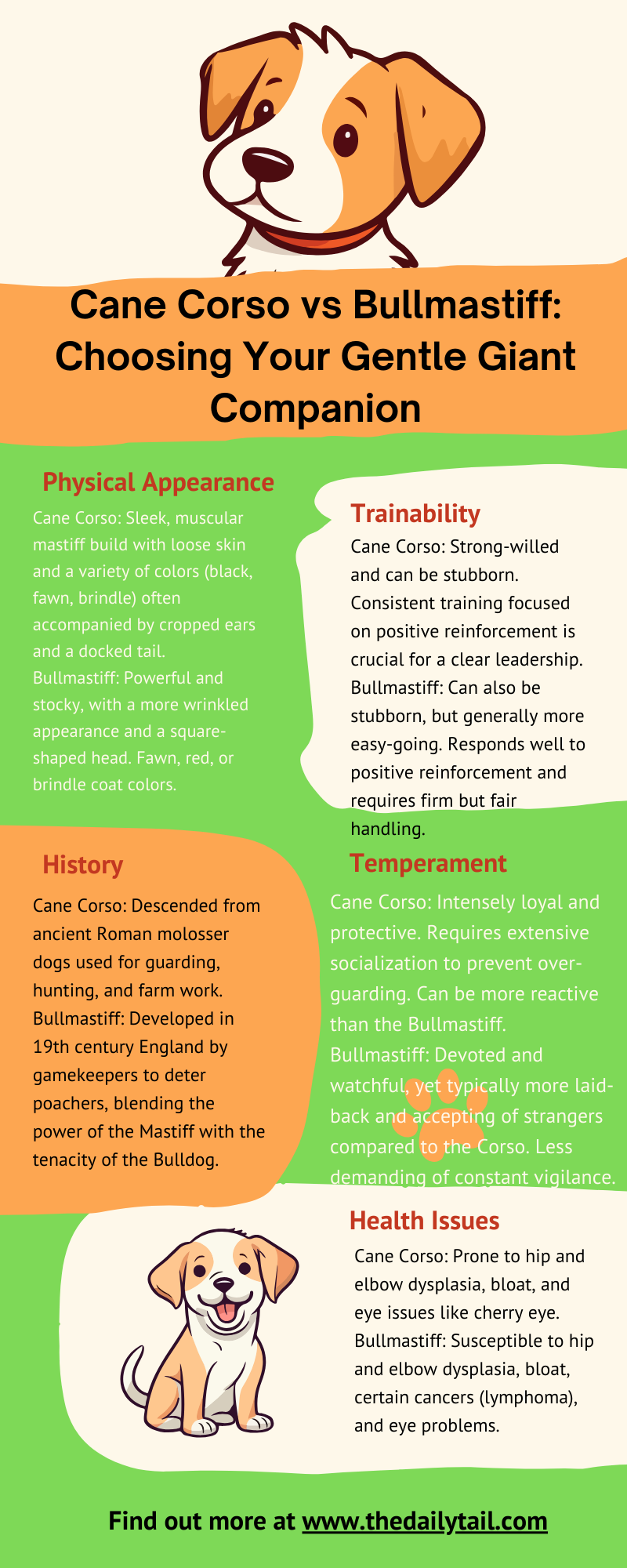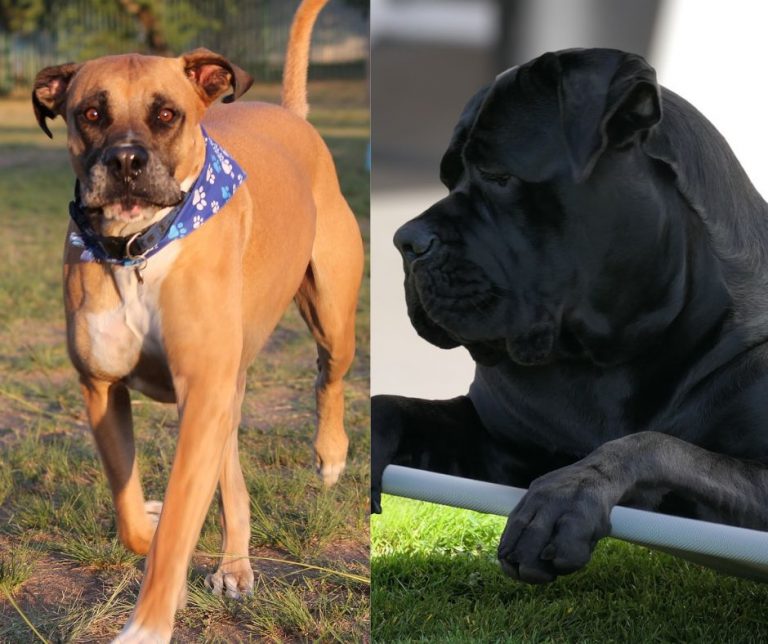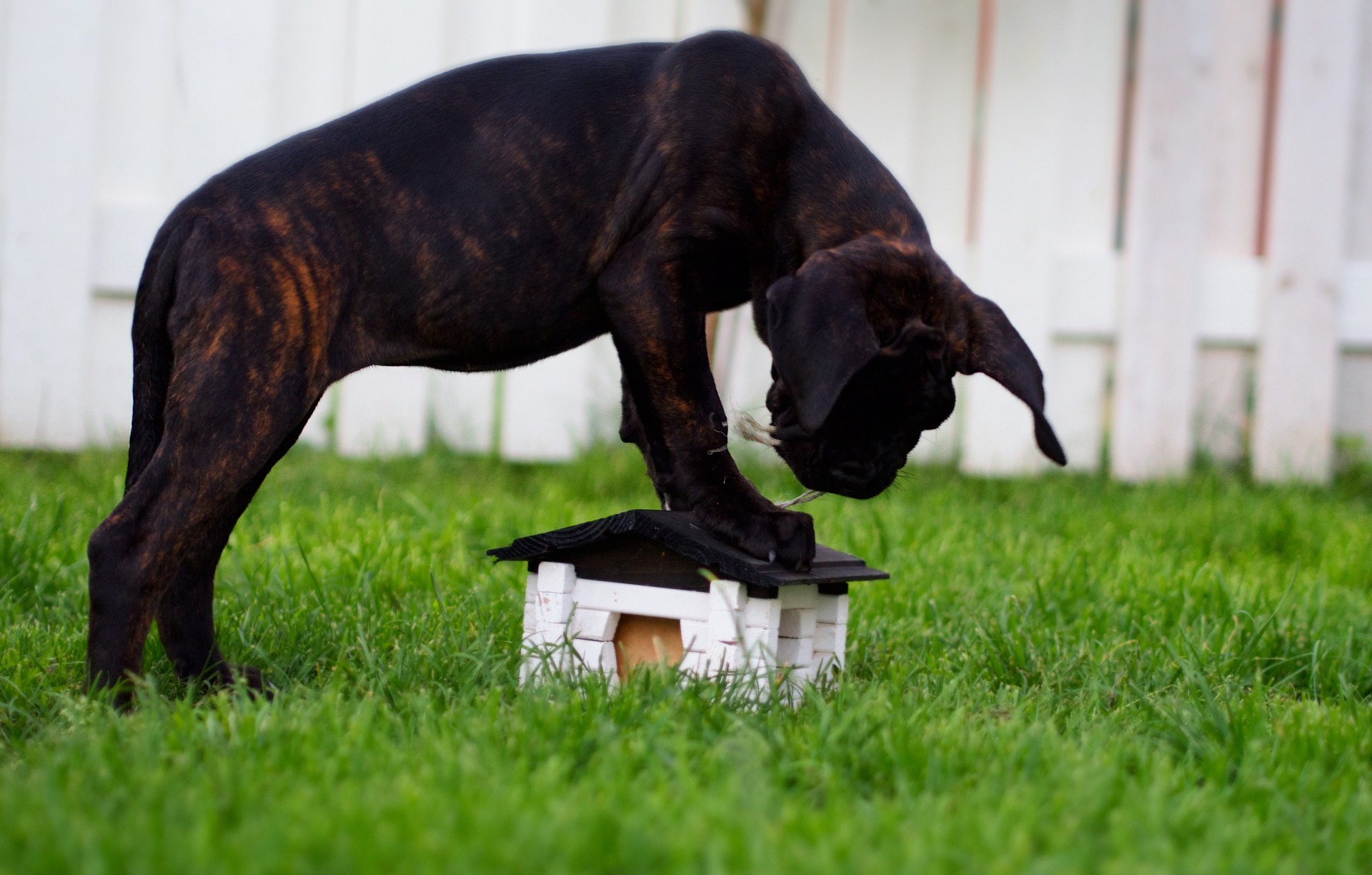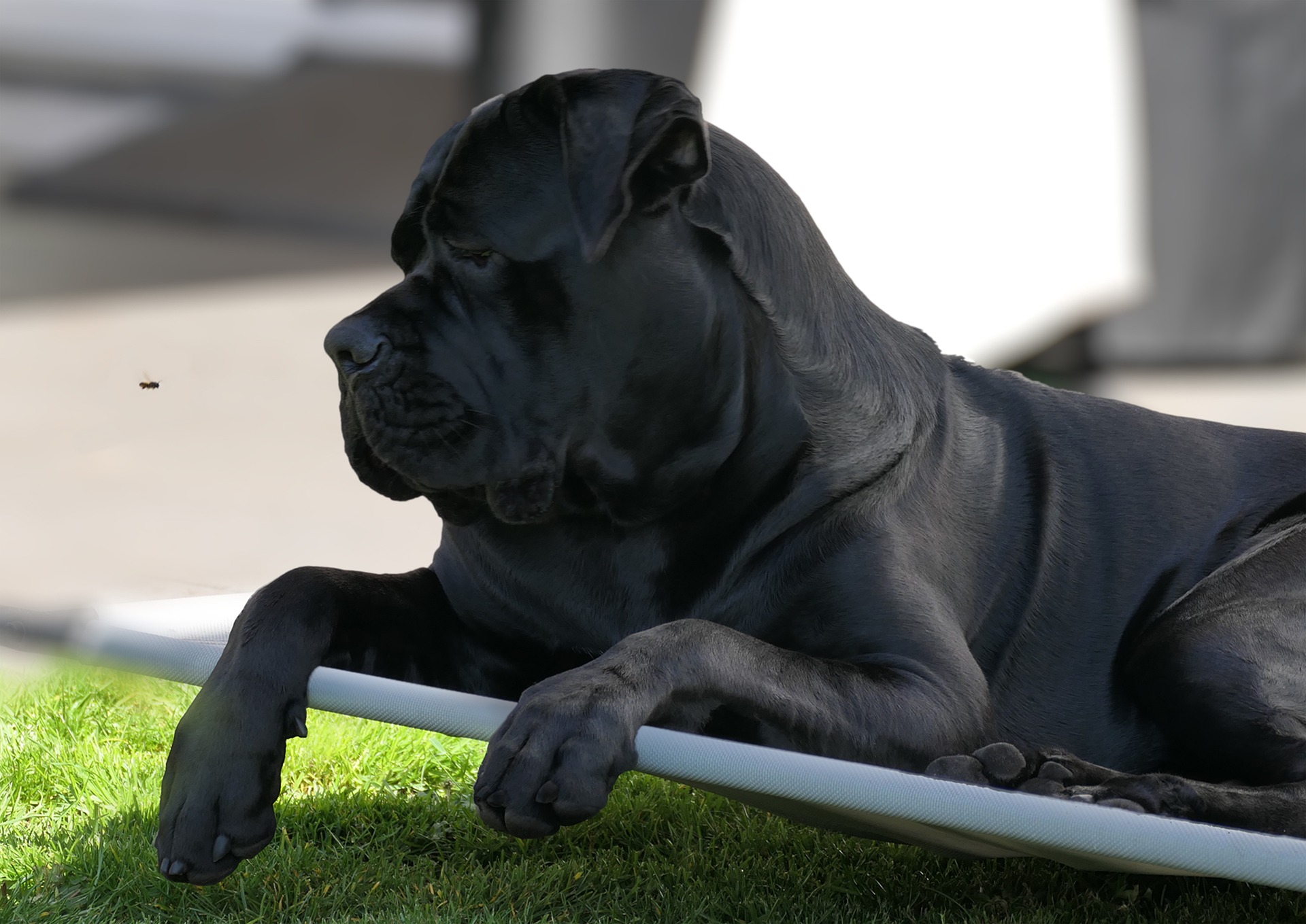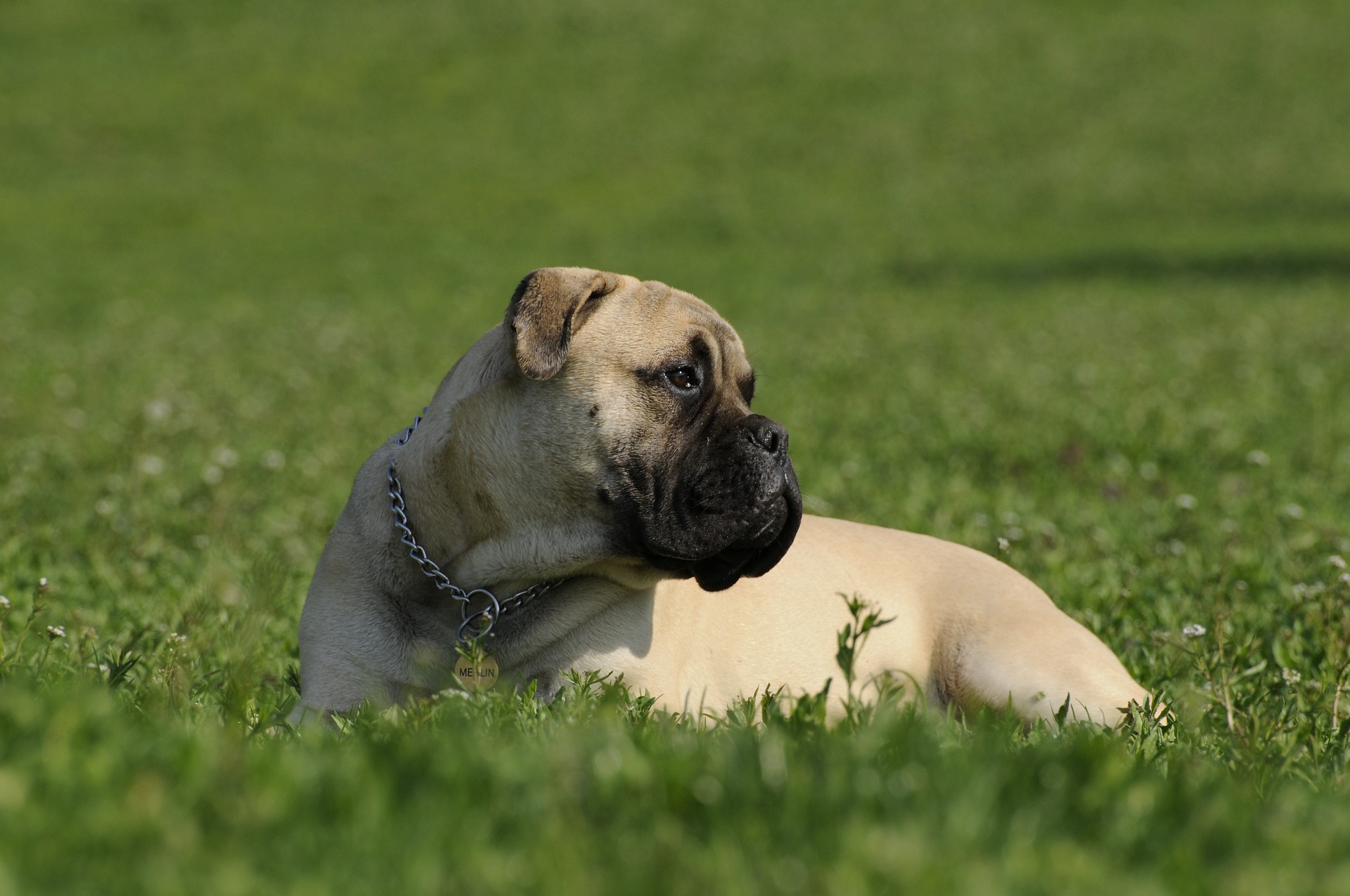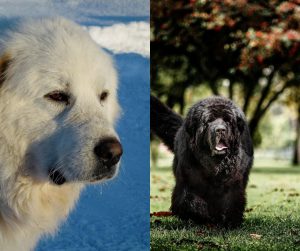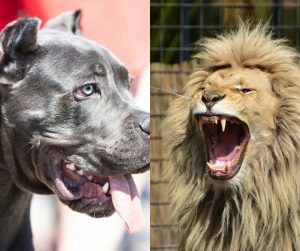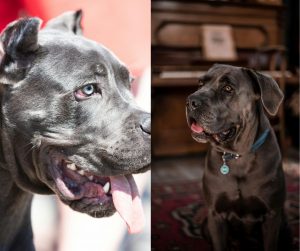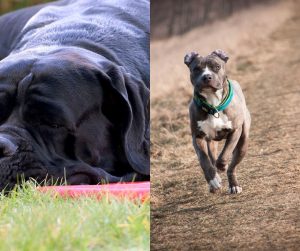As someone who’s drawn to formidable guardians, I understand the captivating differences between the Cane Corso and the Bullmastiff. Let’s explore what truly sets them apart beyond their size.
The Cane Corso and Bullmastiff are two imposing breeds known for their strength and guarding abilities. Often, they are considered by those looking for a capable and loyal protector for their home. Both breeds share a similar physical grandeur and a reputation for being gentle giants, yet they bear distinct histories and characteristics that might make one a better fit for a potential owner than the other.
Selecting either a Cane Corso or Bullmastiff is a significant decision, one that hinges on understanding their unique temperaments, exercise needs, and care requirements. While their physical presence is mightily similar—both are large, muscular, and have a commanding appearance—their personalities, training needs, and suitability to family life can differ greatly. Let’s take a look at the Cane Corso vs Bullmastiff dog breed comparison.
Key Takeaways
- The Cane Corso and Bullmastiff are both sizable guard dogs with distinct histories and traits
- Understanding each breed’s temperament and exercise needs is crucial for a harmonious household
- Careful consideration of health, training, and lifestyle fit is essential when choosing between these two breeds
Origin and History
In the world of robust canine breeds, the Cane Corso and the Bullmastiff share rich histories that reflect their development into the protective and loyal breeds known today. Originating from different parts of Europe, both dogs have roots deeply entwined with ancient lineages of the mastiff family.
Cane Corso History
Italy is the birthplace of the Cane Corso, a dog with a past as a highly regarded Roman Molosser. Initially bred for battlefield prowess, their roles evolved through the centuries. They transitioned into valued farmhands, adept at herding and guarding livestock, a job they embraced with the seriousness reflective of their resilient nature.
- Region of Origin: Italy
- Related Breeds: Neapolitan Mastiff, Sicilian Branch of Cane da Presa
- Historical Function: Warfare, Farming assistance, Livestock guardianship
Bullmastiff History
The Bullmastiff is the product of England’s necessity for a reliable estate guardian in the 19th century. By crossing the formidable English Mastiff with the tenacious Bulldog, a breed emerged that was adept at patrolling the expansive grounds of English estates and deterring poachers with an imposing yet calm demeanor.
- Region of Origin: England
- Ancestral Breeds: English Mastiff, Bulldog
- Initial Purpose: Estate guarding, Poacher deterring
Physical Characteristics
When considering the Cane Corso and the Bullmastiff, one can discern that they both boast impressive statures and distinctive appearances that are hallmarks of their breeds.
Size and Weight
The Cane Corso stands tall at 64-70 cm for males, while females typically reach 60-66 cm. They carry themselves with a weight generally spanning from 45-50 kg for males and slightly less for females. Meanwhile, the Bullmastiff males have a slightly varied height range of 64-68 cm, with females slightly shorter, ensuring a robust presence. Weight-wise, bulls-tip the scales a bit heavier, with males ranging from 50-59 kg and females 41-54 kg.
Coat and Colors
A rich tapestry of colors adorns the coats of these breeds. The Cane Corso’s coat can be black, gray, fawn, or brindle, offering a sleek, short, and coarse texture that requires moderate grooming. Conversely, the Bullmastiff sports a similar short and low-maintenance coat that comes in fawn, red, or brindle shades.
Ears and Tail
The Cane Corso historically had its ears cropped, leading to an erect posture that contributes to their vigilant expression, though this practice is becoming less common. Their tail is typically docked. Bullmastiffs, on the other hand, often keep their naturally floppy ears and full-length tail, which complement their strong, yet gentle, demeanor.
Temperament and Personality
When deciding between a Cane Corso and a Bullmastiff, understanding their distinct temperaments and personalities is crucial. Both breeds display a mix of loyalty and protective instincts, but they exhibit these traits in different ways.
Cane Corso Temperament
The Cane Corso is intelligent, confident, and carries an air of assertiveness. This Italian breed is known for forming strong bonds with their family, displaying a sense of loyalty that makes them excellent protectors. However, their protective nature means that they require early socialization to ensure they are calm and well-behaved around strangers. Due to their intelligence, they respond well to consistent training — but beware, their confident streak can sometimes come across as stubbornness.
- Traits of the Cane Corso:
- Protective: Highly, but needs socialization
- Loyal: Extremely to their family
- Intelligent: Yes, which aids in training
- Confident: Often self-assured, requires a firm handler
- Calm: Generally, if given proper exercise and mental stimulation
Bullmastiff Personality
In contrast, the Bullmastiff often exudes a calmer demeanor. They are known as gentle giants who are affectionate with their families and can be good with children. Loyalty is ingrained in their character, making them reliable guardians of their home. Although they may not require as much exercise as the Cane Corso, the Bullmastiff still benefits from regular activity to maintain a calm and happy personality. Training a Bullmastiff may be an exercise in patience, as they can have an independent streak, but they are no less eager to please.
- Traits of the Bullmastiff:
- Protective: Naturally, but not overly aggressive
- Affectionate: Warm and loving with family
- Loyal: Deeply, forming strong bonds
- Calm: Usually, but exercise helps maintain this trait
- Independent: Can be, which might make training a challenge
Training and Socialization
When it comes to training and socialization, it’s like teaching two students who have different strengths; the Cane Corso and Bullmastiff both thrive with consistent, positive reinforcement but have their unique needs. Recognizing their intelligence and acknowledging their potential for obedience makes all the difference.
Ease of Training
Cane Corso: With their intelligence and eagerness to please, Cane Corsos are relatively easier to train. These dogs possess a natural agility that makes them well-suited for various activities. However, their training should begin early as puppies to ensure they develop into disciplined adult dogs. Due to their intelligent nature, they often respond well to training that is consistent and involves positive reinforcement.
Bullmastiff: These gentle giants are intelligent too, but they may show a stubborn streak which can require a firm and patient trainer. Obedience training is a must for Bullmastiffs to curb any overprotective behavior and ensure they are manageable at home. A Bullmastiff’s trainability improves greatly with an owner who demonstrates strong leadership and a clear understanding of training basics.
Socialization Needs
Cane Corso: Socialization is crucial for Cane Corsos to build confidence and ease around strangers and other pets. Introducing a Cane Corso to various people, animals, and environments at a young age helps them become well-adjusted adults. Their socialization should be handled with care, as this breed forms strong bonds and can be protective of their home.
Bullmastiff: Bullmastiffs also require early socialization to help them differentiate between normal and abnormal behavior in strangers. Without proper socialization, their protective nature might become problematic. Frequent, positive exposure to different scenarios and people will help Bullmastiffs become more comfortable and less inclined to react defensively to unfamiliar situations.
Exercise and Lifestyle
When considering a Cane Corso versus a Bullmastiff, understanding their exercise needs and compatible lifestyles is key. They both hail from working dog lineages, necessitating a certain energy outlet to keep them happy and healthy.
Activity Level
Cane Corso: These dogs possess a high energy level and require extensive exercise to maintain their physical and mental well-being. Owners should provide at least 2+ hours of exercise per day. This can include long walks, play sessions, and other activities that stimulate their body and mind.
- Exercise Needs: Vigorous daily exercise, mental stimulation
- Prey Drive: Notable; activities should account for this trait
Bullmastiff: In contrast, the Bullmastiff doesn’t need as much physical activity. About 1 hour of exercise per day will suffice for them. While they still enjoy being active, they don’t have the same endurance or energy levels as the Cane Corso.
- Exercise Needs: Moderate; more focused on strength than endurance
- Prey Drive: Lower than the Cane Corso, but still present
Living Conditions
Cane Corso: These dogs thrive in an environment where they have room to roam. A large property with a secure fence is ideal, offering them the space to exercise freely. As family pets, they bond closely with their household but may be wary of strangers due to their protective nature. Apartment living is not recommended.
Bullmastiff: Although also a large breed, Bullmastiffs adapt better to various living conditions, including apartments, as long as their exercise needs are met. They tend to be less active indoors and can fit well into the family as gentle giants, provided they have sufficient space to rest comfortably. However, a house with a yard is still preferable for these powerful dogs.
Both breeds can be wonderful companions when their exercise and lifestyle needs align with what their owners can provide.
Health and Care
When considering the health and care of the Cane Corso and Bullmastiff breeds, potential owners should be aware of their distinct needs. Despite these breeds sharing some commonalities, each requires specific attention regarding health monitoring and daily care practices.
Common Health Issues
Both the Cane Corso and the Bullmastiff are generally robust dogs, yet they are predisposed to certain health problems.
- Hip Dysplasia: This is common in larger breeds, where the hip joint doesn’t fit snugly into the hip socket, potentially leading to arthritis
- Elbow Dysplasia: Similar to hip dysplasia but affecting the elbows, it can also result in discomfort and mobility issues
- Bloat: Also known as gastric torsion, this is a life-threatening condition that requires immediate veterinary attention
- Cancer: A concern in many dog breeds, including these, with various types affecting them as they age
- Obesity: Keeping their weight in check is crucial as excess pounds put strain on their joints and can lead to other health issues
- Mange: An uncomfortable skin condition caused by mites, it’s essential to catch and treat early
- Hypothyroidism: Affecting the thyroid gland, it can lead to weight gain and lethargy, but it’s usually manageable with medication
Regular veterinarian checkups and being attentive to their health cues can help keep these companions happy and healthy.
Grooming and Diet
Grooming Needs:
- Shedding: Both breeds have low to moderate shedding levels
- Coat Care: Both require regular brushing, with the Bullmastiff’s short coat needing less frequent grooming compared to the Cane Corso, which may need more regular brushings to manage shedding
Diet:
- Careful portion control and quality food can help prevent obesity. A diet balanced in proteins, fats, and carbohydrates is vital, and for some, including ingredients like rice can provide good energy sources
- Be aware of each dog’s specific dietary needs, which can change with age, activity level, and health status
Maintaining a consistent grooming routine and providing a diet fitting their individual needs are central to their care. Regularly tending to their coat and dietary requirements not only supports good health but also reinforces the bond between owner and pet.
Suitability as a Family Dog
When it comes to adding a furry member to one’s family, the Cane Corso and Bullmastiff are both breeds that are often considered due to their protective nature combined with a loyal temperament. They each bring a unique set of qualities to a household, especially in their interactions with children and their capabilities as an excellent guard dog.
Interaction with Children
Cane Corsos are affectionate and bond strongly with family members, including children. However, due to their size and strength, supervision is essential when interacting with small children. They’re protective and can be a vigilant companion for kids, offering a balance of playfulness and dependable behavior.
- Well-suited for families with older children who can appreciate and respect their size
- Necessary for consistent training and socialization from a young age for safe interactions
Bullmastiffs, in contrast, are known to be quite gentle and patient, making them a calmer addition to a household with children.
- Ideal for households with younger children as they are reliable and exhibit a quieter demeanor
- Tend to be less energetic, requiring less intensive supervision during playtime
Guard Dog Capabilities
Both the Cane Corso and Bullmastiff hold reputations as strong and loyal guard dogs.
Cane Corso dogs are inherently protective, ready to defend their family if needed. Their presence alone can be a deterrent to intruders, thanks to their work ethic and formidable appearance.
- Highly trainable; hence, their protective instincts can be channeled appropriately with the right guidance
Bullmastiffs have historically been bred to guard and this instinct is alive in the breed to this day. They are watchful, but exceptionally loyal to their family.
- Typically reserved with strangers — not prone to unnecessary aggression but will stand their ground if the family is threatened
- They emit a sense of calm strength, which contributes to their reliability as family protectors
In both cases, these breeds’ capabilities as guardians for a family should be matched with responsible ownership, ensuring they are provided the training they need to be a balanced protector and a loving family pet.
Choosing the Right Breed for You
When welcoming a new furry friend into the home, it’s crucial to consider how they’ll fit into one’s lifestyle and living space. Both the Cane Corso and the Bullmastiff are large breeds with distinct needs in terms of space, energy, and long-term care.
Size and Space Considerations
The Cane Corso vs Bullmastiff size comparison shows they are both are towering figures, boasting an average height of 23 to 28 inches and 23 to 27 inches, respectively. They are both substantial in weight too, with the Bullmastiff generally tipping the scales at 100 to 130 pounds, while the Cane Corso is usually not far behind. A potential owner needs to ensure they have sufficient room for these big-hearted beasts.
- Home Requirements: A spacious home with a backyard is ideal
- Exercise Needs: Daily exercise is critical – minimum of an hour for the Bullmastiff dog breed
Choosing a breed isn’t just about square footage; it’s also about matching energy levels. If someone is active and loves to spend time outdoors, a Cane Corso may be their match, as they tend to display higher levels of activity compared to the laid-back Bullmastiff.
Long-Term Commitment
Considering the lifespan is a meaningful way to gauge long-term commitment. Both breeds typically enjoy a life expectancy of around 8 to 12 years. They become a part of one’s family for a significant amount of time and this longevity emphasizes the essential nature of the commitment.
- Maintenance: The Bullmastiff requires minimal grooming compared to the moderate grooming needs of a Cane Corso
- Healthcare Costs: Having a larger breed can often equate to higher veterinary bills, something potential owners should prepare for
The price for each breed may vary based on lineage and breeder, but they usually represent considerable investments. When choosing between these loyal giants, it’s not just about the initial cost, but also the ongoing expenses related to their hea